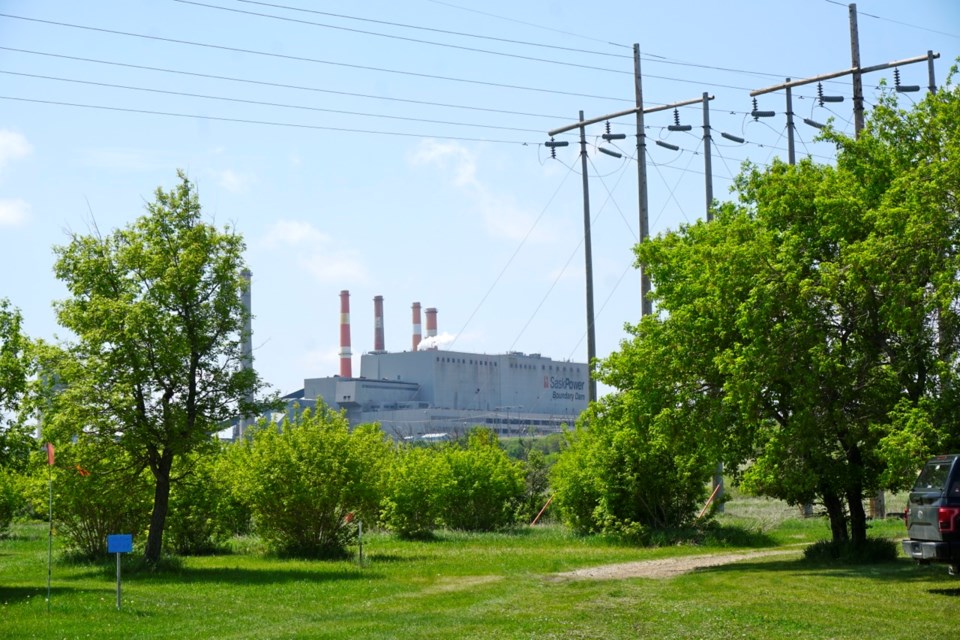ESTEVAN — Energy security and reliability are the main reasons the Government of Saskatchewan is going to extend the life of its coal-fired generating units.
And Jeremy Harrison, the minister responsible for SaskPower and the Crown Investments Corporation, said in an interview with Â鶹ÊÓƵ that work has already started on one unit.
A letter was sent to SaskPower employees in the Estevan and Coronach areas June 18, confirming the government was going to extend the lifespan of its coal-fired power fleet. It came roughly five months after it said it was strongly considering retrofits for the units.
The government has been doing "a lot of work behind the scenes" regarding a number of factors, Harrison said, including inventory on the health of the facilities themselves, which he said showed the commitment of the staff through generations at the Poplar River station near Coronach, and the Boundary Dam and Shand stations near Estevan.
"They came back showing these facilities are between 81-87 per cent of optimal health," Harrison said. "It really is a remarkable thing. I think it would be fair to say even SaskPower was surprised by what … viable condition these facilities were in."
The cost of refurbishing these units would be half the cost of building new natural gas plants to replace these facilities, he said. The government's numbers show it would have to build four natural gas sites similar to the Aspen facility near Lanigan to replace the 1,500 megawatts provided by coal.
"This decision was based on two things, though: energy security and reliability," said Harrison. "As for energy security, coal is what we have here in Saskatchewan. If we had hydro, we'd be looking at building more hydro. If we had gas, we'd be looking at building more gas, and likely still will be, but we're importing 92 per cent of our gas [that we're using]."
Saskatchewan has hundreds of years of coal moving forward, he said, and it also has uranium, so the province is going to continue to use coal-fired power to bridge to small modular reactors that use uranium assets.
Reliability of coal plants has been "remarkably high" over a long period of time, he said. Also, Harrison pointed out Unit 3 at Boundary Dam, which is connected to the carbon capture and storage facility, has been operating "remarkably well" in recent years.
Despite the recent success of CCS, and even though the government is looking closely at it, a final decision has not been made on the technology that will be used for the refurbished units. The first step is a return to service for Unit 4 at Boundary Dam. It was placed onto stand-by status at the end of 2021, and had been pulled back into service repeatedly since that time, but Harrison said it was offline for nearly a year due to a "significant technical challenge".
"We're going to be repairing Unit 4, we're going to be going through the recertification process … for Boundary Dam 4 as well," said Harrison. "For the people who work at Boundary Dam particularly, they understand the implications of that: the government is very, very serious about moving rapidly in that direction."
Work has started on Unit 4 already, but Harrison did not have a timeline for how long it would take, and he did not divulge which unit they would work on next. Other conventional coal-fired units needing a retrofit would include Units 5 and 6 at Boundary Dam, the one unit at Shand, and the two units at Poplar River.
Unit 5 at Boundary Dam has been on stand-by since late last year. Shand is the newest of the units, having been completed in the early 1990s, so it will likely be the last to be extended.
"There's going to be a huge amount of work that goes into these refurbishments and life extensions, and we want to make sure the sequencing is right, and there are a whole bunch of implications that go along with the sequencing as far as what long-lead items are ordered," said Harrison.
The government will also order the long lead items and materials that will be needed for life extension projects.
When Saskatchewan encounters what he called the "January 20th scenarios" – those peak load times when it's -40 C during the night and solar isn't generating and the wind turbines aren't generating, the government has to rely on its baseload options like coal and natural gas.
Harrison said the federal government has no standing in this discussion, because electricity generation is "unequivocally" within the realm of provincial jurisdiction.
"They knew this decision was coming. We were very clear with them. I've been very clear with my counterparts at the national level for many months that this was the direction that we very strongly looking at going in. They understand the reasons as well. This isn't ideological. This is necessity."
The province is also ready to partner with the federal government on nuclear baseload, he said. (Â鶹ÊÓƵ will have an update on SMRs in the province at a later date).
Harrison thanked the United Mine Workers of America and United Brotherhood of Electrical Workers, who have been very engaged during the process on a number of fronts. Municipalities have also been very engaged as well, which he said has been helpful.
The government is proceeding with an all of the above approach to power generation. It wants to diversify the power mix, he said, and it is proceeding with renewable projects to reach a net-zero grid by 2050.





